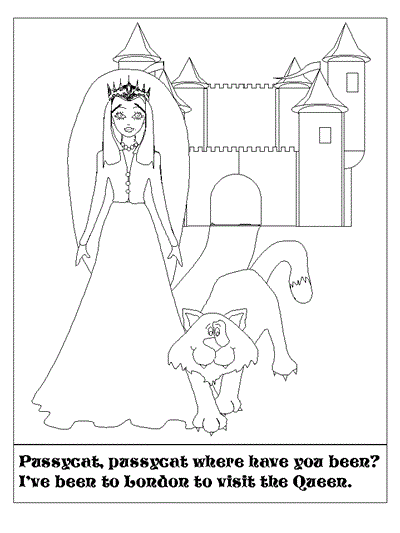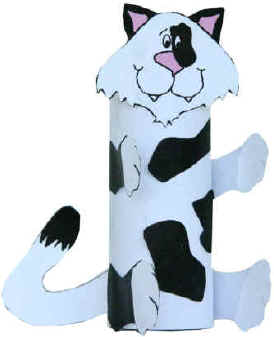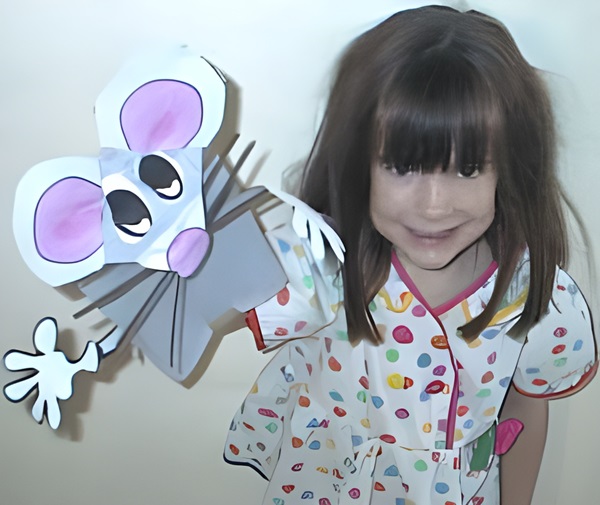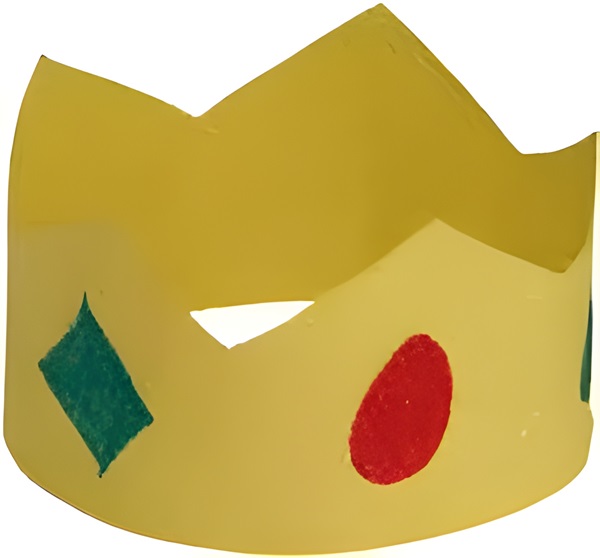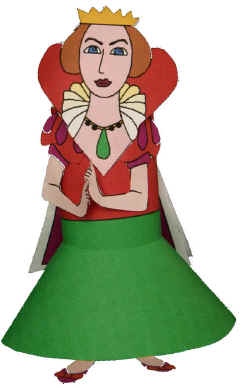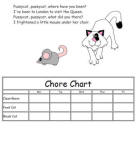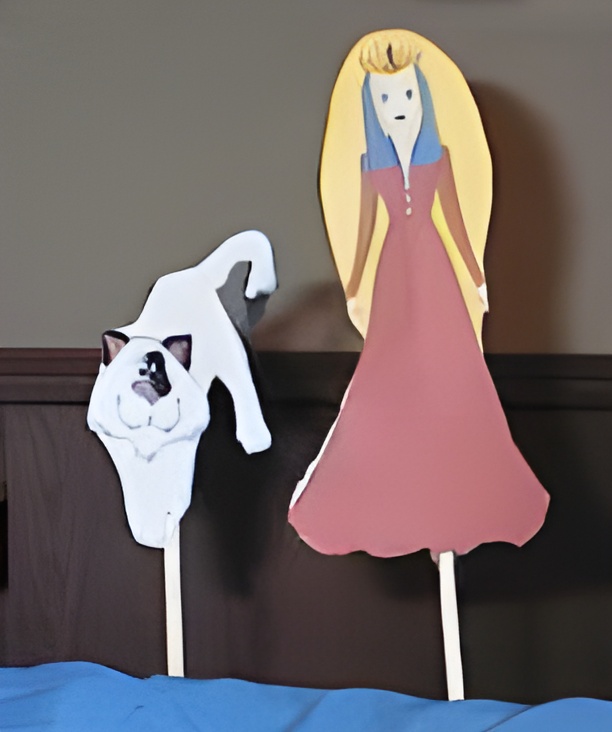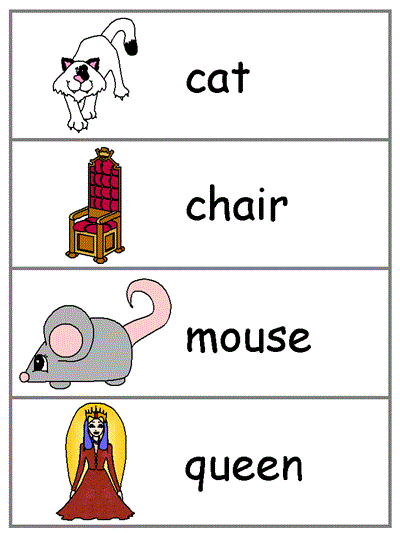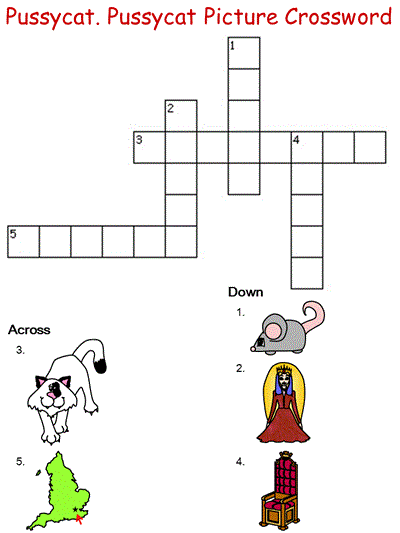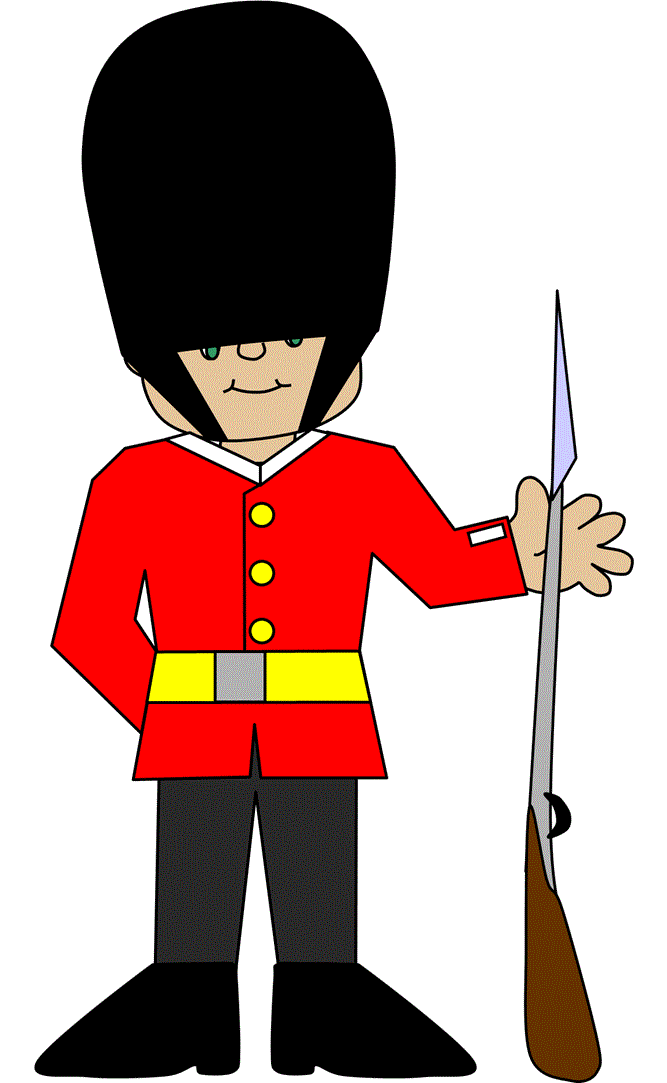DLTK's Nursery Rhymes for Kids
Pussycat, Pussycat Where Have You Been
Pussycat, pussycat, where have you been?
I've been to London to visit the Queen.
Pussycat, pussycat, what did you there?
I frightened a little mouse under her chair.
Lyrics and Coloring Pages for Pussycat, Pussycat Where Have You Been:
Crafts for Pussycat, Pussycat Where Have You Been:
Pussycat, Pussycat Where Have You Been Printable Resources:
Pussycat, Pussycat Where Have You Been Puzzle Worksheets:
On-Line Games and Puzzles:
The History of "Pussycat, Pussycat, Where Have You Been?"
"Pussycat, Pussycat, Where Have You Been?" is a traditional English nursery rhyme that has been popular with children for many generations. The rhyme tells the story of a cat who goes on an adventure to London and encounters the Queen.
Origins and Early History
The rhyme is believed to have originated in the 16th century, reflecting England's fascination with royalty and its cultural influence. It was first published in its current form in the 19th century, appearing in collections such as "Gammer Gurton's Garland" in 1784. Over time, it became a staple of English children's literature.
Summary and Structure
The rhyme consists of a simple dialogue between a speaker and a cat. The speaker asks the cat where it has been, and the cat responds that it has been to London to visit the Queen. The rhyme concludes with the cat mentioning it frightened a little mouse under the Queen's chair.
Cultural and Historical Context
- Royal Influence: The mention of the Queen and London reflects the cultural importance of the British monarchy and the capital city during the time the rhyme was popularized. Visiting London and seeing the Queen would have been seen as a grand adventure, even for a cat.
- Moral and Educational Use: Like many nursery rhymes, "Pussycat, Pussycat" is often used to teach children rhythm, rhyme, and language skills. It also subtly introduces children to historical and cultural references in an engaging and memorable way.
- Animal Personification: The use of a cat as the protagonist adds a whimsical and relatable element for children, who often find animal characters appealing and entertaining.
Modern Adaptations and Influence
"Pussycat, Pussycat" continues to be featured in children's books, educational materials, and media. It is commonly included in nursery rhyme anthologies and is often used in early childhood education settings to promote literacy and storytelling skills.
